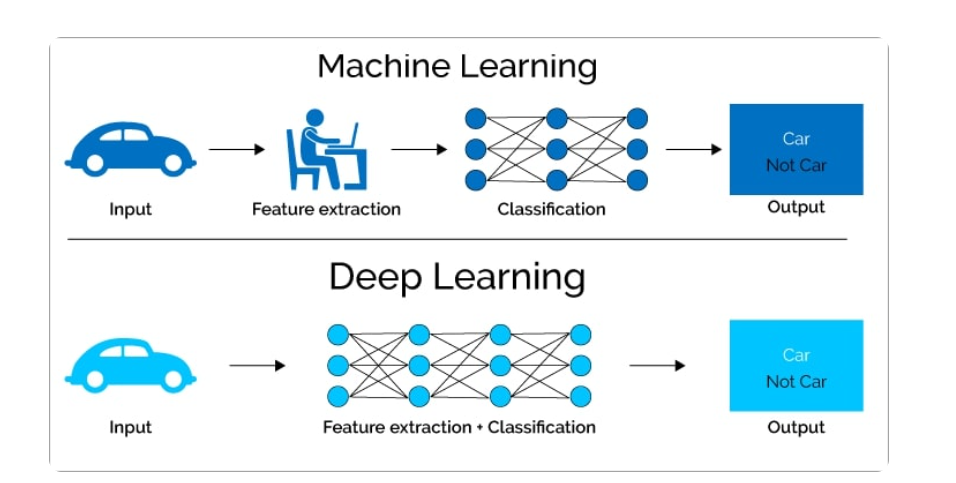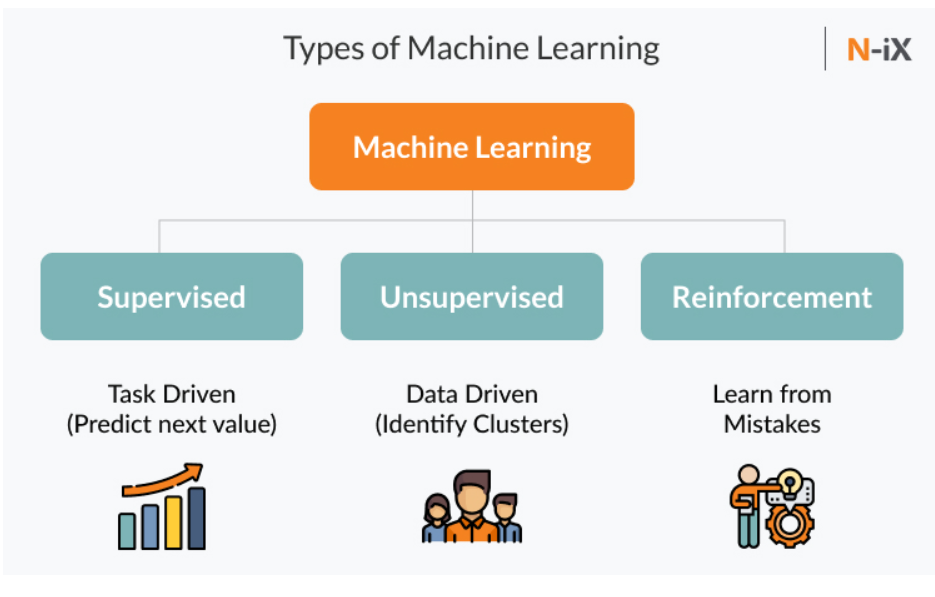Guide
Deep Learning vs Machine Learning: Which Is Better?

Many people use the terms “Deep Learning” and “Artificial Intelligence” synonymously when discussing machine learning. However, this is only partially accurate. Is there a connection between these two notions in any way? What distinguishes them? How can you know which one to choose for your particular company situation?
Deep learning is, in reality, a kind of machine learning that is more sophisticated and refined.
Machine learning, of which deep learning is a subset, works in much the same manner. However, its capabilities and the business cases in which it is used are somewhat different. Let’s take a deeper look at these two ideas now.
WHAT IS MACHINE LEARNING AND WHEN IS IT USED?
To put it another way, machine learning is the branch of computer science that studies how computers may learn from their own experiences without being explicitly instructed. It is employed in situations when a traditional algorithm would be infeasible or impossible to implement. Market segmentation, equipment failure prediction, email filtering, driverless vehicles, and other uses for machine learning algorithms are just a few examples of the many uses for these algorithms. It is possible to optimise and automate a huge number of processes in practically any department by using machine learning techniques.
HOW DOES MACHINE LEARNING WORK?
Using preexisting datasets, data scientists build machine learning models, test the models, and then fine-tune them before using them in real-world settings. When training a model, the more data you give it, the better and more accurate it will be.
As a background process, the model runs and offers findings depending on the training it has received. The models may be retrained as often as needed by data scientists to keep them current and improve the outcomes. That’s why machine learning models keep becoming better and better at their job. In the case of Mercanto, for example, machine learning models are retrained each and every day.
The models fall into three main types based on how they are taught.

When a model is being trained on a labelled dataset under the guidance of a human observer.
An example of this would be predicting whether or not a consumer would click on an ad based on their demographic information (age, gender, interests, etc.).
It is called “unsupervised learning” when the model is trained on data that has not been categorised or labelled. Market segmentation is a good example. Learning via trial and error with feedback from the model’s own experiences is known as reinforcement learning, a form of machine learning approach. For example, winning a game requires finding the best possible sequence of actions to achieve the desired outcome.Driverless autos and games are good examples.
HOW IS DEEP LEARNING DIFFERENT FROM CONVENTIONAL MACHINE LEARNING?

There is a major distinction between ML and deep learning in that although ML models may generate inferences without being explicitly trained and improve their findings over time, they still need some human intervention and modification to achieve their full potential. Deep learning, on the other hand, uses neural networks.
For example, a deep learning model may use its neural network to assess if predictions or results are true or not, and if so, it can alter the parameters on its own if necessary to enhance the outcomes of its predictions and results.
However, the negative is that they are more difficult to understand and explain than traditional Machine learning models.
In addition, Deep Learning models aid in the completion of even the most difficult jobs and provide new insights from a continuous flow of unstructured data ( videos, texts, sensor data, images, etc.).
Models and neural networks are utilised for self-driving vehicles, voice recognition, picture identification, natural language processing, precision medicine, and many more applications of deep learning.
Deep learning is used by many large companies across a broad variety of sectors, including:
for its cutting-edge recommendation algorithm, Netflix
JP Morgan Chase – for the identification of insider trading and adherence to legislative regulations
Pinterest is a great tool for finding aesthetically comparable things, colours, and patterns.
Baker Hughes – for seismic modelling, automating well planning, anticipating equipment failure, and managing supply chains, and many more applications..
With Via, you can utilise deep learning to find the best routes for carpooling.
Even in the most difficult healthcare issues, deep learning is being applied. It is being extensively utilised in an effort to control the spread of the Cobid-19 pandemic. There have been several studies on how deep learning may be used to predict proteins linked with SARS-CoV-2, which produces COVID-19, for example.
WHEN SHOULD YOUR BUSINESS USE DEEP LEARNING?
Despite the fact that Deep Learning is considered to be a more sophisticated kind of machine learning, it is not a suitable match for all business situations.
You must first train Deep Learning Models on massive volumes of data, such as terabytes and petabytes, in order to ensure their effectiveness. Because of this, firms in the banking, e-commerce, telecommunications, social media, oil and gas, and customer service sectors, as well as others that deal with a steady influx of huge data, should consider using deep learning.
Deep learning models will yield wildly erroneous and sometimes ludicrous outputs if you don’t have access to extremely huge datasets for training. In addition, the more data a trained Deep Learning model processes each day, the more sophisticated results and improved performance it will acquire over time. Here’s an example to help make the point:

While Deep Learning models don’t need a lot of computational power to provide results, they do while the models are training. This challenge may be solved at a lower cost by using Cloud TPU (The Tensor Processing Unit), which is a service provided by Google and priced per hour for Deep Learning workloads. Several of Google’s most popular applications, including Translate, Photos, Search Assistant, and Gmail, are powered by the TPU. Because it costs less than a fifth of the cost of a non-TPU CPU, it’s a major advantage.
WHAT DO YOU NEED FOR AN EFFECTIVE MACHINE LEARNING/DEEP LEARNING PROJECT?
A well-defined purpose. You must have at least a basic idea of the outcomes you want to accomplish using AI and machine learning before you begin gathering data. Data scientists will assist you in the early phases of the project in transforming this concept into concrete KPIs.
- The creation of a machine learning system that is robust. This work requires the expertise of an experienced software architect.
- Big data engineering ecosystems (based on Apache Hadoop or Spark) are essential if your firm processes large volumes of data. There are several siloed data sources that may be collected, integrated, stored and processed using this technology platform. The ecosystem is built by a big data architect and big data engineers.
- Invoking ETL operations on the new ecosystem (extract, transform and load). This is done by a big data architect or a machine learning expert.
- The last step in the data preparation process has been completed. Additionally, data scientists may need to further enhance the data to meet the needs of a certain business case.
- Algorithms are used, models are built, and fresh data is used to fine-tune and retrain models. These duties are carried out by data scientists and machine learning engineers. TensorFlow, PyTorch, Keras, and Caffe are just a few of the well-known deep learning technologies. TensorFlow is an excellent framework for deep learning.
- Insights may be clearly seen. Specialists in business intelligence are to blame for it. To construct dashboards with a user-friendly UI, you may also require front end developers.
Video Guide
FAQ’s
Is machine learning better than deep learning?
Why is deep learning more powerful than machine learning?
As the amount of data grows, deep learning outperforms classical machine learning in terms of its performance. Deep learning algorithms don’t work well when the data is little. A huge quantity of data is required by deep learning algorithms in order for these algorithms to learn about a subject in detail.
Is deep learning difficult?
Due to its restricted scope and difficulty of use, this tool set is not recommended as a long-term investment due to its low return on time spent. People aspiring to become data scientists are already becoming sidetracked by the stress of having to master things they will never use.
What is the disadvantage of deep learning?
In order to perform better than other approaches, it needs a big quantity of data and is incredibly costly to train because of sophisticated data models. Deep learning also demands a large number of pricey GPUs and a large number of computers. Because of this, consumers will pay more.













